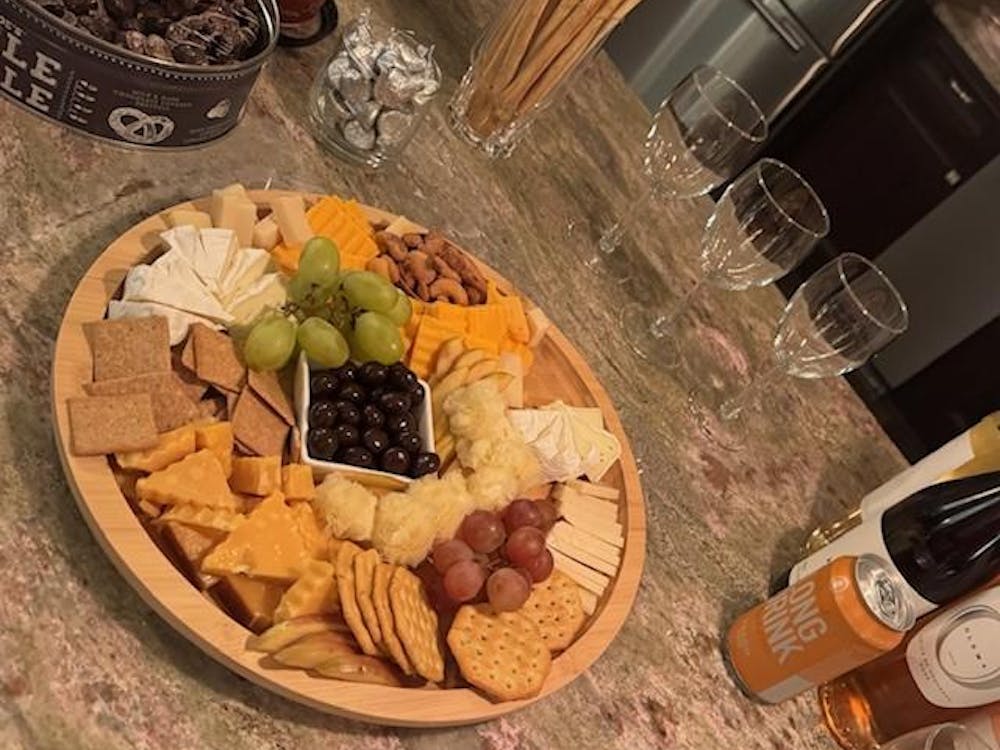Paper fabric woven into diamonds of shade and light symbolizes the Hotel Theresa on Malcolm X Boulevard. Two black suitcases open to reveal pictures of Ray Charles playing the saxophone, James Brown and Smokey Robinson & the Miracles. These 11 "trunks," some more literally interpreted than others, comprise the Dresser Trunk Project, on display at the University Art Museum through Dec. 23.
The trunks, designed and constructed by prominent artists and architects across the country, represent the 11 stops along the Southern Crescent Line passenger train route. They depict refuges for black Americans during the segregation-era South, including a Negro League baseball stadium and the Carver Inn, a hotel in Charlottesville that welcomed black customers.
The exhibit "is one part of the triumvirate of exhibitions about forming American identity" on display this fall and spring at the University Art Museum, museum curator Andrea Douglas said. The three exhibits explore America's Southern legacy, and the Dresser Trunk Project approaches the subject by illustrating havens along the railway.
"This particular [exhibition] is about dealing with race, space and place and unifying them," said Assoc. Architecture Prof. William Williams, who organized the project.
The trunk concept was chosen for its role in railroad tradition. Trunk teams of artists, architects and landscape architects researched each stop from New York City to New Orleans and created trunks to represent them. University Assoc. Architecture Prof. Craig Barton, helped design the trunk for Birmingham, Ala., which spotlights Rickwood Field, America's oldest ballpark and former home to a Negro League team.
The trunks also represent sites such as the Theresa Hotel and Glory Hotel Club in Harlem, N.Y.; the Coleman Hotel in Newark, N.J.; the Whitelaw Hotel in Washington, D.C.; and the Carver Inn, part of Charlottesville's history. Some of the trunks are interactive: The stacked blocks of Williams' Whitelaw Hotel trunk fit together like a puzzle. Each trunk takes a unique approach to representing its city.
When choosing a site for his Birmingham trunk, Barton stumbled across Rickwood Field by accident. He had an interest in the Negro League and thought the trunk could be about the Rickwood Field's all-black baseball team, the Birmingham Black Barons.
"I found Rickwood Field, a site that still operates and is in relatively good shape that also had a group of trustees that helped with getting us historical documentation," Barton said. "It was a happy accident."
Barton has collaborated with Williams on other projects, as both share an interest in black culture and art. On the opening day of the exhibition, Williams explained that he became concerned with community art programs after attending a conference at the University of Texas at Austin that suggested communities with art programs are "much better off." He wanted to preserve communities' historical locations, turning these landmarks into art community members can appreciate.
"At lots of places, particularly historical black communities, there were theaters [and] nightclubs being lost, and we wanted to know how to save them," Williams said.
In addition to constructing trunks, participants in The Dresser Trunk Project hope to produce a narrative that ties New York City to New Orleans. Several writers are being spoken to about this part of the project, and it will most likely be a group effort, just as the trunks were.
But the first goal of the trunks, Williams said, is "to raise awareness about structures and places."
For the next several weeks, the spirit of these historical spots will be kept alive at the University Art Museum. Following its run in Charlottesville, the Dresser Trunk Project will finish its tour in appropriate fashion: The exhibit will visit all 11 cities and venues along the Crescent Line.






